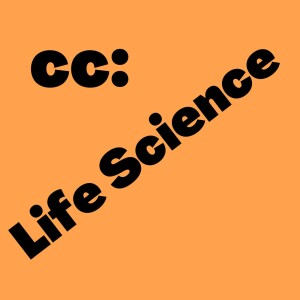
The 3 Rs and the Role of Small Animals in Research
 2024-04-10
2024-04-10
Reduce. Refine. Replace. These are the three Rs of animal research. The intent is to reduce the number of animals used, refine methods to be efficient and humane and replace animals with other models where possible.
This cc: Life Science episode is sponsored content, courtesy of MediLumine.
I talked to Stephen Marchant, Founder and CEO of MediLumine about the importance of animal research, how imaging in small animals is different from humans and innovations that support the 3Rs of laboratory animal sciences.
While the FDA no longer requires the testing of all new drugs in animal models prior to clinical trials, for some drugs, the requirement may stand. Animal research has been essential for many advances in human health and will surely remain relevant in the quest to discover new treatments in the future.
As compassionate beings, we want to help our fellow humans whenever possible. When a child has cancer or a mother with a diagnosis of early onset Alzheimer’s tells her children that at some point she may not recognize them (or they her), no options will be left unexplored to look for and find solutions and those options likely include some research using animal models to better understand disease.
The animal technicians and scientists working in laboratory animal sciences have a passion for developing therapies and treatments for human disease but also for taking care of animals. For those interested to know more, Stephen recommends the GetReal Podcast by Dr Cindy Buckmaster to truly appreciate the reality of this and what it is like to work with laboratory animals in the life sciences.
In vivo imaging is used to better understand disease progression or response to treatment, and it is one aspect of research that isn’t likely to be replaced soon. The development of novel contrast agents allows scientists to visualize structures such as tumors or vasculature much deeper in the organism thus precluding the use of visual inspections and use of a caliper to measure tumor size. This breakthrough is built in to MediLumine’s tag line ‘Vision without Sacrifice’.
Imaging structures in a mouse, whether by MRI or PET scan is very different from imaging in humans. The structures are (obviously) much smaller. What I hadn’t realized previously is how the small size requires longer measurements to get the desired resolution. Typical contrast agents like CT contrast agents used in the clinic are rapidly cleared making it more difficult for small animal micro-CT systems to generate high resolution images with these contrast agents. Stephen explained how the development of contrast agents like Fenestra HDVC, allows improved imaging of mouse organs with in vivo micro-computed tomography (CT).
Depending on the goal of an experiment, modalities like MRI or CT can provide good resolution which allows researchers to calculate, for example, the volume of an object such as a tumor. Other modalities, such as optical imaging, are preferred when sensitivity is important. Bioluminescent reporters can sensitively be detected in vivo with the trade-off being resolution.
…with optical imaging, it's a very sensitive modality. So you might be able to see something at lower concentrations, for example, with bioluminescent imaging. If you look at some of the tumor studies, in some of the publications, we see even a few days after the injection of tumor cells, we're able to see signals, but we're not necessarily able to localize them very well. So, for example, if you have, let's say, a signal in the right lobe of the liver, you would see something coming with optical imaging, but you wouldn't necessarily be able to localize it and say precisely exactly where it is.
Without these in vivo imaging methods, understanding the biology of tumor progression would require a larger cohort of animals, with a requirement to euthanize some fraction at various time points to locate tumors and measure their size. That’s the reduction element of the 3 Rs.
Refinement is also possible. Stephen shared an example of how new contrast agents in microCT allow the study of fatty liver disease that couldn’t be done previously with terminal studies and histology.
As for replacement, the development of organoids, small collections of differentiated cells, offer an alternative to some animal assays while more closely reflecting an in vivo condition than monolayer cell cultures. I’ll be covering that in a future episode.
Your deepest insights are your best branding. I’d love to help you share them. Chat with me about custom content for your life science brand. Or visit my website.
If you appreciate this content, you likely know someone else who will appreciate it also. Please share it with them.
This is a public episode. If you would like to discuss this with other subscribers or get access to bonus episodes, visit cclifescience.substack.com
More Episodes
 2024-11-06
2024-11-06
 2024-10-02
2024-10-02
 2024-09-25
2024-09-25
 2024-09-11
2024-09-11
 2024-08-21
2024-08-21
 2024-06-26
2024-06-26
 2024-05-15
2024-05-15
 2024-04-24
2024-04-24
Create your
podcast in
minutes
- Full-featured podcast site
- Unlimited storage and bandwidth
- Comprehensive podcast stats
- Distribute to Apple Podcasts, Spotify, and more
- Make money with your podcast
It is Free
- Privacy Policy
- Cookie Policy
- Terms of Use
- Consent Preferences
- Copyright © 2015-2024 Podbean.com





